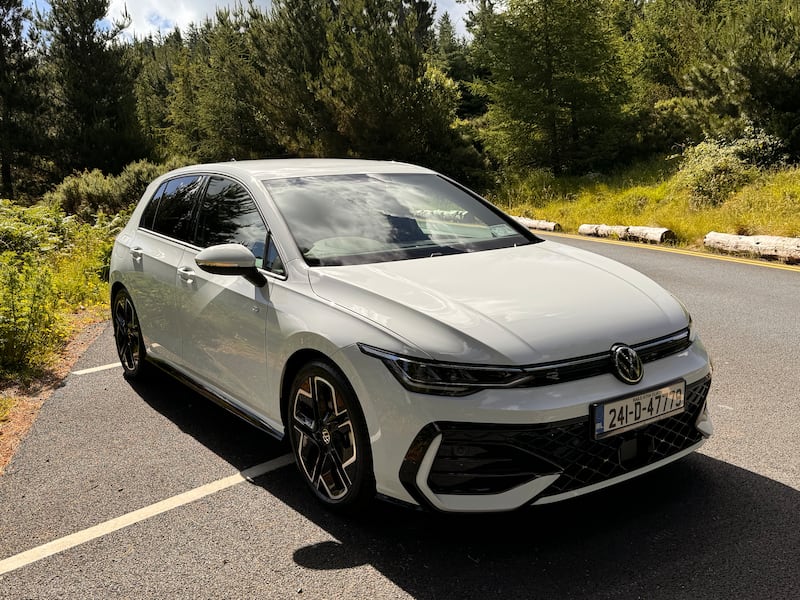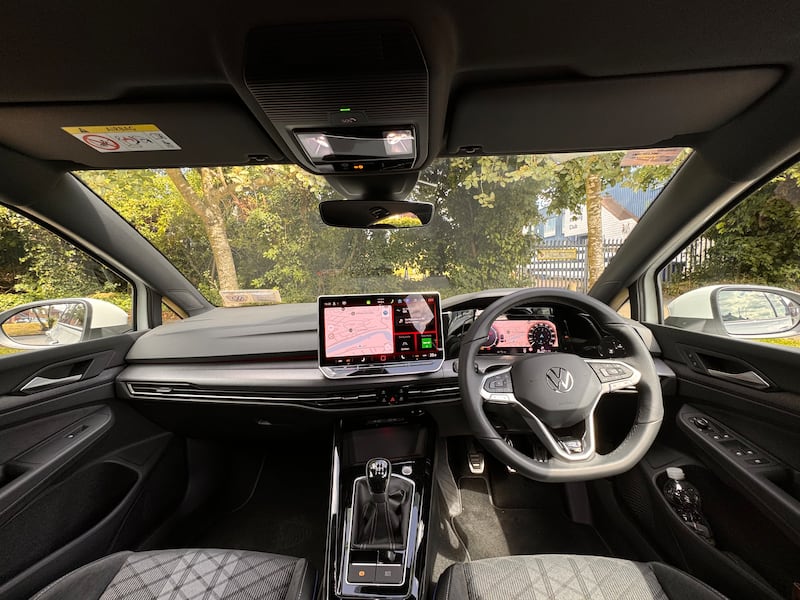This year the Volkswagen Golf celebrates its 50th birthday (one that’s worryingly close to my own) and it’s a birthday worth celebrating. The Golf was born almost out of desperation as VW was struggling to find a way to replace the big-selling but rapidly ageing, Beetle. There were some spectacular blind alleys in this process – have a Google at the oddly-proportioned and rather Lada-esque EA276 prototype when you get a moment – but at the end of the process VW hadn’t merely come up with a replacement for an old model, it had come up with a car that would define the car for the next several decades.
Designed by Giorgetto Giugiaro (the greatest living car designer and I’ll brook no argument) and featuring a neat and simple front-wheel drive layout, the Golf wasn’t the first hatchback, nor was it the first front-drive five-seat family car, and nor was it the first family car to get a sporting version (step forward the GTI in 1976). But as is so often the case with not-firsts, the Golf took all of those ideas and combined them with nigh-perfect execution (save perhaps for the Mk1′s famously sponge-like brakes) into a whole that would define an entire genre of cars.

As successive marks of Golf begat replacements, so the model became bigger, faster, more luxurious, more expensive, and more technologically advanced. We’ve seen Golf’s with narrow-angle V6 engines, compound engines featuring both a turbocharger and supercharger, four-wheel drive models, cabriolets, estates, and even a one-off with the W12 turbo 600hp engine from a Bentley mounted behind the seats.
What we hadn’t seen, until the launch of the Mk8 Golf in 2019, was a Golf that was not as good a car as its predecessor. In fairness the Mk7 Golf set a spectacularly high hatchback benchmark, but when it was launched the Mk8 had a faint whiff of disappointment about it. Droopy styling, cack-handed infotainment, and some unpleasantly cheap cabin fixtures marked it heavily down. It also seemed to become somewhat lost in the VW model range as headlines focused on the new all-electric ID line-up, while buyers deserted VW’s one-time bestseller in favour of the bigger, pricier and notably SUV-shaped Tiguan.
READ MORE
Which brings us to this Golf, which is the Mk8.5 – updated, tidied, spruced, but still recognisably the same car that was launched in 2019. And it’s much, much better.
It’s not wildly different. On the outside the styling has been titivated somewhat and looks much less droopy and sad-faced than it did. Inside any sense of unpleasantly cheap materials has been banished. And the dreadful touchscreen has been chucked out and replaced with a smart new 12.9-inch screen with vastly improved software and the promise of built-in ChatGPT AI responses.
Let’s deal with that first, shall we? The new screen – upgraded to a whopping 15-inches across in our R-Line spec test car – is indeed much improved, easier to use, faster to respond, and yet still deeply frustrating. Things which were once simple are now complicated, but it’s hard to pillory the Golf for this when all others, or at least most others, are at the same thing.

Screens are just always more fiddly and time-consuming (surely not a good move in an ever-more safety conscious era) than buttons, and this Golf, with that massive 15-inch telly staring you in the face, and the 10.5-inch digital instrument screen behind the wheel, is veering dangerously close to digital overload. Don’t get me started on the ChatGPT stuff either – for all its whizz-bang-ness it’s as confusing and confused as any other voice-control system and essentially useless.
However, there are areas in which the Golf is better. Our test car came with the 150hp version of the 1.5-litre four-cylinder petrol turbo unit. Fitted with a six-speed manual gearbox, this is almost the most basic mechanical version of the Golf you can get, and that’s what we’ve been testing. And, broadly, it’s lovely. The engine is mechanically sweet, there’s enough torque to keep you rowing along nicely, and it’s impressively economical, easily averaging 5.5-litres per 100km. A shame that the manual shift is a touch notch and inaccurate at times – check out a Mazda 3 for the last of the truly great manual shifters in a family car.
You can also have a more basic 115hp version of the same engine, a mild-hybrid model with a seven-speed automatic gearbox, diesel options (yes, still), and two plug-in hybrid models which can both exceed 100km on electricity alone with a full charge on board. Plus the usual GTI and R performance variants.
This time around the Golf feels sharper to drive than it did in 2019. It’s not night-and-day better, but it just feels a shade more responsive and alive through the wheel than it did before. We’ll need to drive the new GTI version to get a true handle on whether or not VW has been fully successful in livening up the Golf’s handling and precision, but the omens are good. It’s also comfy across bumps, not least because this is not a heavy car – no batteries to weigh everything down.
Most of all, though, this updated Golf reminds me, and should remind us all, just what fools we’ve been. It’s notable that the Tiguan – bigger, heavier, less efficient, more expensive – now considerably outsells the Golf and that is, with all due respect to the Tiguan, a bad thing. People – far too many people – have bought into the cargo cult of SUVs, believing them to be more practical, safer, more fashionable. Well, on the first two points they’re not and on the third that’s highly debatable. How can they be more fashionable when everyone has one?
The Golf, though? It’s still a Golf with all that entails. So it’s easily roomy enough for day-to-day life (I filled this test car with four people, two of whom are long-legged teenagers, and enough luggage for a week’s holiday), sharp enough to make driving on lonely roads enjoyable, frugal enough that it won’t be ruinously expensive to run, and still cuts enough of a stylish dash to impress the neighbours. Buying an SUV means you’re just buying compromise – extra ride height that you’re never going to use, space that’s wasted most of the time, worse fuel economy, higher emissions and a higher purchase price. Stupid. Marketing has made fools of us all.
Not that the Golf is especially cheap any more. The basic price is now €32,680, and this R-Line test car, even with the cheapest engine and gearbox, is brushing the hem of €40,000. The plug-in hybrids are closer to €50,000 – a long, long way from the Golf’s affordable-to-all beginnings 50 years ago.
Still, it’s now good enough that the farrago of the 2019 Mk8 can be forgotten and forgiven, and the Golf remains a masterclass in how to package a family car into a shape that’s desirable and drivable all at once. The only thorn in its side is the Skoda Octavia, which is mechanically identical underneath, roomier inside and slightly cheaper to drive.
Lowdown: Volkswagen Golf 1.5 TSI R-Line
Power: 1.5-litre four-cylinder turbo petrol engine with 150hp and 250Nm of torque driving the front wheels through a six-speed manual gearbox.
0-100km/h: 9.9 secs.
Emissions (motor tax): 126g/km (€200).
Fuel consumption: 5.5l/100km (WLTP).
Price: €38,020 as tested. Golf from €32,680.
Our rating: 4/5.
Verdict: A Golf that feels more Golf-y again, and which is much improved. So much better than an equivalent SUV that it’s frankly making us all look daft.













